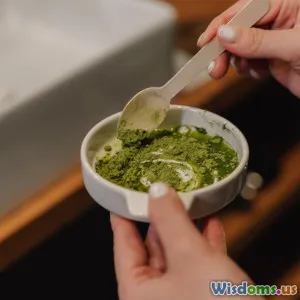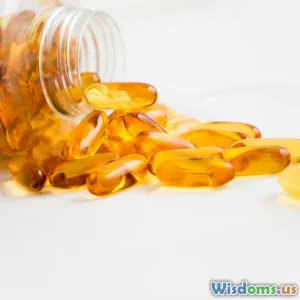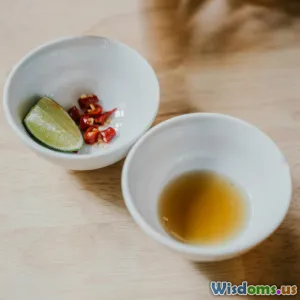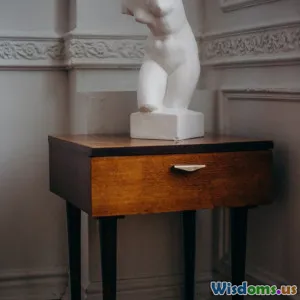
DIY Beauty Treatments Inspired by History
7 min read Discover timeless DIY beauty treatments from ancient to modern history to rejuvenate your skin naturally at home. (0 Reviews)
DIY Beauty Treatments Inspired by History
Beauty has always been more than just skin-deep; it is a reflection of culture, innovation, and nature’s bounty accumulated across centuries. While the cosmetic industry offers a vast array of modern products, history provides fascinating, tried-and-true beauty rituals you can replicate at home. From ancient Egyptian milk baths to Victorian rosewater tonics, these DIY beauty treatments not only offer natural advantages but also connect you to timeless traditions.
Introduction
Imagine bathing like Cleopatra did or refreshing your skin with rose water as Victorian ladies once did. Historical beauty treatments encapsulate the essence of natural self-care, largely relying on locally sourced ingredients and simple techniques. This article will guide you through some of the most effective and intriguing beauty remedies from the past and provide you with DIY recipes to bring these techniques into your modern routine.
Ancient Egypt: Cleopatra’s Milk and Honey Bath
Perhaps the most iconic historical beauty treatment is the milk and honey bath attributed to Queen Cleopatra of Egypt.
The Science Behind It
Milk contains lactic acid, a natural alpha hydroxy acid (AHA), which helps exfoliate dead skin cells, promoting softness and smoothing textures. Honey acts as a humectant, trapping moisture and providing antibacterial properties.
DIY Recipe
-
Ingredients:
- 2 cups whole milk (or powdered milk for convenience)
- 1/2 cup raw honey
- Optional: A few drops of lavender or rose essential oil
-
Instructions:
- Fill your bathtub with warm water.
- Stir the milk and honey until well combined.
- Add essential oils if desired.
- Soak for 20-30 minutes, gently massaging the mixture into your skin.
- Rinse off with warm water.
Benefits
This bath promotes radiant, hydrated skin, softens rough patches, and lends a subtle, natural fragrance.
Ancient Rome: The Olive Oil Cleanse and Scrub
Olive oil was considered sacred for both culinary and beautification purposes in Roman times.
Cultural Insight
Romans used olive oil as a cleansing agent before scrubbing the skin with a tool called a strigil to remove dirt and dead skin.
DIY Recipe
-
Ingredients:
- 3 tablespoons extra virgin olive oil
- 1 tablespoon finely ground sugar or sea salt
- A few drops of lemon juice (optional for brightness)
-
Instructions:
- Mix olive oil with sugar or salt to create an abrasive scrub.
- Massage in circular motions onto damp skin.
- Rinse with warm water.
- Use lemon juice sparingly to brighten and tone skin.
Benefits
This natural exfoliant and moisturizer combination leaves your skin refreshed, smoother, and nourished without harsh chemicals.
The Victorian Era: Rosewater Tonics and Cucumber Masks
Victorian women cherished delicate, dewy complexions and had access to beautifully fragrant homemade tonics and masks.
Rosewater Tonics
Roses have long been prized for their soothing and anti-inflammatory effects. Rosewater acts as a gentle toner that balances pH and calms irritation.
DIY Rosewater Toner
- Boil fresh rose petals (about 1 cup) in 2 cups distilled water.
- Let cool, strain, and bottle.
- Apply daily with a cotton pad after cleansing.
Cucumber Face Mask
Cucumber was commonly used to reduce puffiness and hydrate the skin.
DIY Cucumber Mask
- Blend half a cucumber peeled and seeded.
- Mix with 1 tablespoon plain yogurt.
- Apply to face for 15 minutes.
- Rinse with cool water.
Benefits
This duo refreshes, tightens pores, and provides a calming effect, great for sensitive or sun-exposed skin.
Traditional Indian Beauty Rituals: Turmeric and Sandalwood
India’s centuries-old Ayurvedic traditions use natural ingredients that have gained popularity worldwide.
Turmeric’s Brightening Power
Turmeric contains curcumin, noted for antioxidant and anti-inflammatory properties.
DIY Turmeric Face Mask
-
1 teaspoon turmeric powder
-
2 tablespoons plain yogurt or milk
-
1 teaspoon honey
-
Mix and apply evenly.
-
Leave on for 10-15 minutes.
-
Rinse thoroughly to avoid staining.
Sandalwood Paste
Sandalwood powder has cooling effects and is excellent for oily or acne-prone skin.
DIY Sandalwood Paste
- Mix sandalwood powder with rosewater until it forms a smooth paste.
- Apply and leave for 20 minutes before washing off.
Benefits
Regular use helps even skin tone, reduce acne, and impart a healthy glow.
20th Century Glamour: Elizabeth Arden’s Eight-Hour Cream Inspired Relief
In the 1930s, Elizabeth Arden pioneered multifunctional products designed to nourish skin effectively.
DIY Multipurpose Balm
Combine equal parts of:
- Shea butter
- Beeswax
- Coconut oil
- A few drops of vitamin E oil
Melt and blend, then cool into a jar. Use as a lip balm, cuticle cream, or dry skin treatment.
Benefits
Nourishing and protective, ideal for everyday skin emergencies in a single jar.
Conclusion
Historical beauty treatments combine the wisdom of nature and tradition, offering sustainable and effective alternatives to synthetic products. By exploring these age-old rituals and adapting them to your daily routine, you not only pamper your skin but also partake in a rich cultural heritage. These DIY recipes empower you to embrace personal care with simple, non-toxic ingredients right from your kitchen.
Whether you're soaking in a Cleopatra-inspired milk bath, refreshing your complexion with Victorian rosewater, or revitalizing your skin with turmeric remedies, the secrets from history can help reveal your timeless beauty.
Try these treatments to experience how beauty care, rooted in the past, effortlessly enhances the present.
Rate the Post
User Reviews
Popular Posts





















